Search
Did you mean: Behistun Inscription?
Search Results

Image
Detail of Aramaic Inscription, Hatra
This limestone slab was inscribed with an Aramaic inscription. The name of the city of "Hatra" as the center of the region "Araba" appears. From the 11th temple at Hatra, Ninawa Governorate, Iraq. Parthian period, 1st to 3rd century CE. On...

Image
Xerxes' Inscription, Van
The cuneiform inscription of Xerxes (486-465 BCE) on the rock cliffs of Van, a city on the shores of Lake Van, eastern Turkey. Written in the three official languages of the Achaemenid Empire: Old Persian, Elamite and Babylonian, it proclaims...
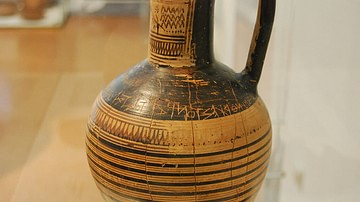
Image
Dipylon oinochoe inscription
The Dipylon oinochoe inscription is a short text carved on an ancient Greek pottery vessel dated to c. 740 BC. It is one of the oldest known examples of the use of the Greek alphabet. The letters are scratched on a wine jug (oinochoe) which...
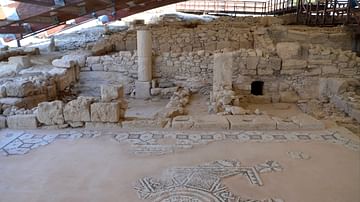
Image
Mosaic with Welcoming Inscription in Kourion, Cyprus
A mosaic with a welcoming inscription graces the entrance of the House of Eustolios in Kourion (Cyprus) with the phrase “Enter for the good luck of the house”. 5th century CE.
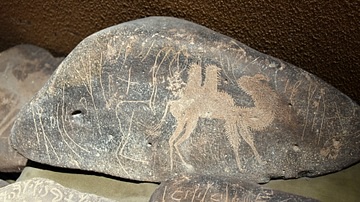
Image
Desert Drawing and Safaitic Inscription
Safaitic inscription with an image of a Bactrian camel carved on a desert rock. The detailed drawing indicates that the scribe has seen this type of Asian camel, probably along the trade route with China. First century BCE to fourth century...
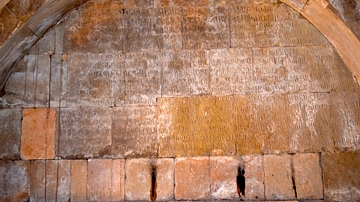
Image
Armenian Inscription in Surb Karapet Church
This decorative inscription in medieval Armenian can be found inside the Surb Karapet Church, which forms part of Armenia's celebrated Noravank Monastery.

Image
Inscription of the Urartian King Menua
The cuneiform inscription on this block mentions king Menua, son of the king Ishpuini. Menua was the 5th king of Urartu. From Anzaf, 10 kilometers northeast of Van (of eastern Turkey). c. 810 to c. 785/80 BCE. (Pergamon Museum, Berlin, Germany...
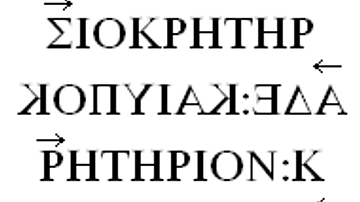
Image
Ancient Greek Boustrophedon Inscription
Example of an Ancient Greek boustrophedon inscription. The arrows indicate the direction of the writing for each line. Non-symmetrical letters change their orientation with the alternate directions of the lines.
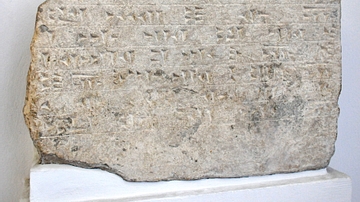
Image
Inscription of the Urartian King Sarduri II
The cuneiform inscription on this block mentions king Sarduri II, son of the king Argishti I. Sarduri II was a King of Urartu and was succeeded by his son, Rusa I. From Astwadzashen, 50 kilometers southeast of Van (of eastern Turkey). c...
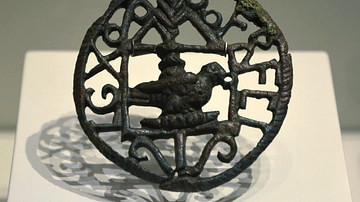
Image
Legio X Fretensis Inscription on a Sword Belt
Sword belt decoration with the inscription LG X FR FEL: Legio X Fretensis Felix (the fortunate), early 3rd century CE. Israel Museum, Jerusalem.